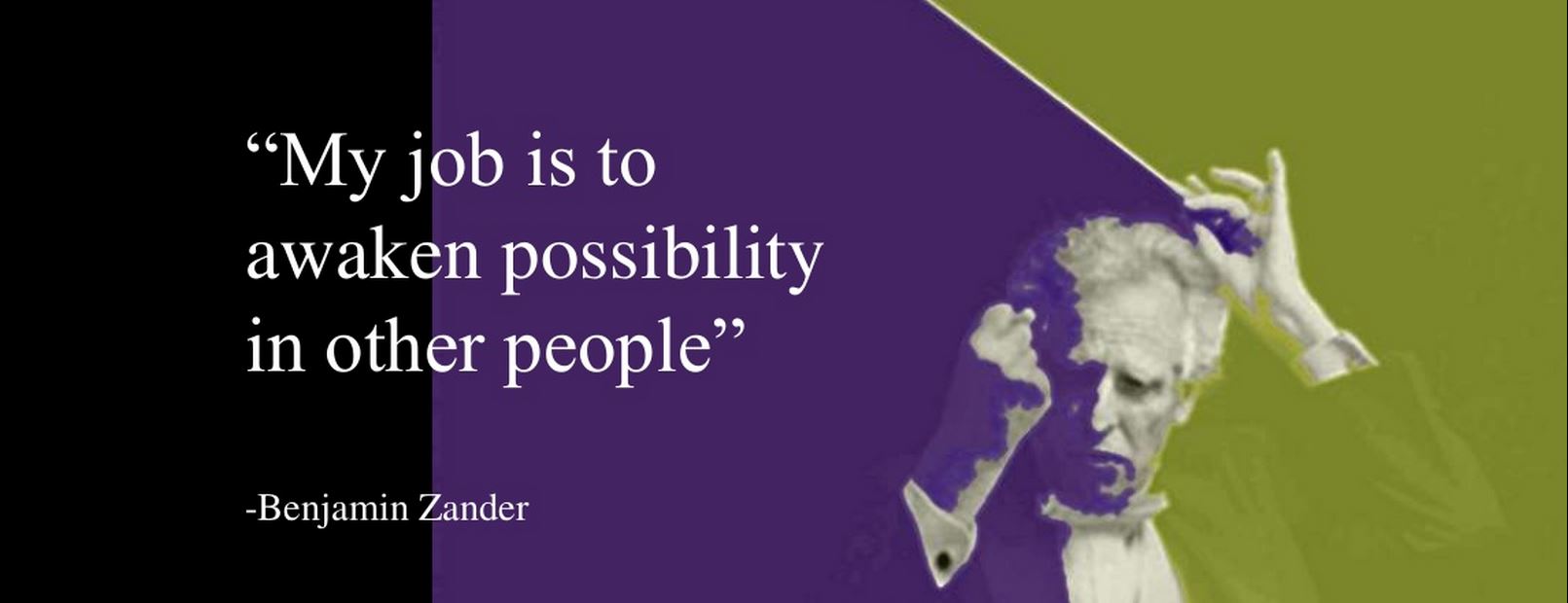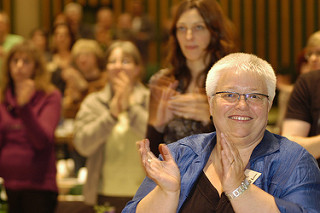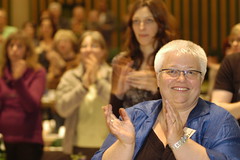Speaking
The Very Heart of It. Keynote for Urban Libraries Unite (ULU) Conference, April 5, 2013
Influence, Keynotes, Leadership, SpeakingHere is the slidedeck from my recent keynote, The Very Heart of It, given at the Urban Libraries Unite (ULU) Conference in Brooklyn, NY on April 5, 2013. Note that the full text of the talk is available as a pdf (with slides) at: http://www.slideshare.net/pbromberg/urban-libraries-unite-ulu-conference-keynote-text-version-wslides
10 Steps to Promote Learning in Your Conference Presentation
ALALearning Blog Posts, Effectiveness, Learning, Presenting, Speaking, TrainingA small meme developed on Twitter yesterday prompted by the following tweet by David Wedamen, “Just had a GREAT idea from @brandeislibn. Conferences should be built around TEACHING not PRESENTING. Wouldn’t that be something?” (Thanks to Michael Stephens for retweeting and bringing to my attention.)
Alice Yucht built on the idea with her tweet, “how about Conferences should be about LEARNING, not Show-n-Tell ?”, which got me thinking about how we approach conferences, and conference presentations, in the library profession. If the goal of the conference is that attendees will learn, what do conference presentations have to look like to achieve that goal?
I believe the goal of presenting should be to a create a change in the listener; a change of behavior, thinking and/or feeling. Any good teacher or trainer will tell you that to be effective in creating that change, you must begin with the learning objective(s) in mind, and work backwards from there to design the lesson or the talk.
CONFERENCE PRESENTING: THE CART BEFORE HORSE?
Wedamen’s tweet points out an interesting feature of many library conferences—they seem to be designed around topics that presenters wish to present on, more than they are designed around, or focused on, the learning that participants need. In too many conference presentations speakers design their talks as core dumps of data, or long, dry recountings of “how we did it good”, without giving enough attention to the key question, “As a result of hearing me speak, people will do/think/feel_________ “(fill in the blank).
The answer to that question is the main organizing principle, the guiding star, of any well-constructed talk. Leaving out all of the other variables that go into an effective presentation (emotion, humor, pacing, eye contact, vocal variety, body language, visuals, questions, room environment, acoustics, etc.) it is very difficult to have a successful presentation if what constitutes success is a mere afterthought (or worse, if success is constituted by the fact that the speaker got a chance to speak at a conference…)
PUT THAT HORSE BACK! TEN THINGS YOU CAN DO TO EFFECTIVELY PROMOTE LEARNING WITH YOUR TALK
- Ask, “What do I want them to do, think, and/or feel as a result of hearing this program?” Ask and answer this question before you write one word or create one slide. The answer to this question is your OBJECTIVE. Let the objective guide you continually as you construct your presentation, throwing aside anything that does not help achieve the goal of the talk.
- Share your objectives with the audience at some point during your presentation–preferably during the first few minutes. If the audience knows what you intend to achieve with the talk it will give them context that will help them make meaning and ground the learning. It will also help them evaluate whether you have effectively achieved your goal. Or not.
- Have a strong opening.The first two minutes of your talk gives you a great opportunity to grab and hold the audience’s attention, but it’s likely that you already have their attention during the first two minutes. It’s the next 58 that present the challenge! So what do I mean by a strong opening? I mean an opening that engages the audience, creates some positive expectation for the rest of the talk, and/or provides a framework for the learning that is about to take place. Olivia Mitchell, who blogs over at Speaking and Presenting, suggests three possible openings – Organized Opening, Story Opening, Dramatic Opening — and discusses when/why to use each.
- Use examples to illustrate your points. For example… Don’t just say, “Merchandising your collection is good.” Say, “When we created a ‘recently returned’ display at the front door and displayed them all covers out, 98% of them recirculated within the same day and our circulation stats increased 20%.” Examples support the learning by attesting to the truth of your message, and also help ground the learning by clarifying and fleshing out your meaning.
- Use simple, clear, engaging visuals to reinforce your points (or don’t use them at all.) Good visuals can help you focus the audience’s attention, help them make meaning, and promote future recall, by connecting intellectual ideas with visual representations. As for bullet points… I’m not one of those people that believes bullet points should never be used, but if you use them, do it sparingly, with a large readable font, and a supporting image (if room permits.)
- Tell stories. Our brains are actually wired to enjoy stories. And because stories have the power to simultaneously engage the listener both cognitively AND emotionally, they are highly effective in getting your point across (assuming you know your point–see #1). And speaking of engaging the listener…
- Appeal to emotions as well as reason. Unless you are presenting on the planet Vulcan, your audience probably consists of human beings, and research shows that it is our emotions that lead us to act. If your goal is get listeners to DO SOMETHING, you need to rouse some feeling within them by appealing to their empathy, their self-interest, or some combination of both. As the Heath Brothers suggest in Made to Stick, you want to appeal, “not only to the people they are right now but also to the people they would like to be.”
- Practice, Practice, Practice:There is no substitute for practicing your talk, preferably in front of others, to work out the kinks, identify and clarify muddied points, and become comfortable with the material. When you know your talk cold you will relax, let you personality show, and more easily connect with the audience. You may have noticed that it’s difficult to connect with a presenter who reads his talk in a monotone and seldom glances up from his notes. Conversely, it is very easy to tune out and start twittering during such a talk.
- Have a strong closing, and telegraph when it’s coming. You don’t have to bring tears to the audience’s eyes, or bring them to their feet. But you do need to let them know that you’re wrapping it up, and use the closing as an opportunity to reinforce your goal. You can do this by simply restating your main points and asserting why/how the listener will benefit by doing what you want them to do. Or you can end with a provocative question (engaging them cognitively), or with a story (engaging them emotionally). However you choose to close your presentation, use vocal variety and word choice to telegraph that your are concluding so the audience realizes that it is now appropriate to clap wildly.
- WHAT ARE YOUR IDEAS? I’m leaving #10 blank for suggestions. What do you do to effectively promote learning in your talks? What have speakers done that have helped you as a learner/listener?
Finding Your Voice(s)
ALA, ALALearning Blog Posts, Effectiveness, Presentations, Presenting, Speaking, TrainingIf you’ve ever taken a class (or read a book or article) on how to speak effectively in public you’ve probably heard the refrain, “find your voice.” Usually this is meant as an exhortation to let your unique, authentic, personal style shine through no matter what the talk or situation. While there is great value in knowing your style, I suggest that speakers who aspire to move beyond the novice level should seek to find not only their voice, but their voices.
Expanding your Palette
We all have a natural speaking style or “voice”. Our voice is more than just our timbre, accent, or pacing, although these characteristics are certainly part of our overall style. Our voice may also be colored by our tendency to be either casual or formal; highly structured or stream-of-consciousness; sedate or inspirational. Whatever your natural speaking style I assure you, there are situations to which it is well-suited and appropriate, and situation to which it is NOT well suited. There will be situations where you own natural voice, or style, will detract from your goal, and the adoption of other styles, will enhance your ability to get your message across.
Since the ultimate goal of any speaking engagement is to effectively communicate with the audience, and (hopefully) create some change in their thinking or behavior, it is therefore important to be able to tailor your style to a specific audience, in a specific time, at a specific place. That is why it is helpful to have a palette of voices to choose to from depending on what we are trying to accomplish in any given talk or training.
Step One: Know Thyself
The first step to effectively using many voices is to be aware of your natural style. You must know what it is you do, if you want to consciously choose to do something else. While painful for many, there is no better way to learn your own natural voice than to video yourself speaking. (yes, I’m afraid you then need to watch the video. Repeatedly.) Once you know and are comfortable with your natural voice, the next step is to begin expanding your palette of styles. Ideally, you should be able to choose from a variety of different styles, changing or modifying your natural voice as the needed. Some situations will call for a casual folksiness, while others will call for a confident professionalism. There are situations that require upbeat enthusiasm or inspiration, while in other situations your effectiveness will be increased by a sober, dispassionate style. Being able to slip into appropriate styles at the appropriate times will greatly enhance your effectiveness as a presenter.
Step Two: Know Others
There is really only one way to consciously incorporate other styles into your speaking toolkit: Watch other speakers with an eye for differing styles, and then practice speaking like they do. A great resource for seeing top tier speakers with markedly different styles is the archive of “TED Talks” available at: http://www.ted.com/ . TED Talks are eighteen minute talks billed as “riveting talks by remarkable people”, and boy do the speeches live up to the hype! After watching a few TED Talks, you’ll quickly see that there are a myriad of effective styles. Watch Sir Ken Robinson (http://www.ted.com/talks/ken_robinson_says_schools_kill_creativity.html)
and then watch Tony Robbins (http://www.ted.com/index.php/talks/tony_robbins_asks_why_we_do_what_we_do.html).
They have vastly different styles. Watch their body language and use of gesture, their pace, their level of formality and choice of words. Each talk is brilliant and engaging, but in very different ways. Try watching one TED Talk every week and keep a notebook with notes on the elements of each speaker’s style, and how those elements make them more or less effective. Also think about when and how those elements might increase your effectiveness if you were able to use them at will.
Step Three: How do you get to Carnegie Hall? (Practice)
Once you know your own style, and have identified elements of other speakers’ styles that you might like to use, the next step is to get out there and start speaking. In addition (or instead of) speaking to community groups, colleagues, or library customers, consider joining (or starting) a local Toastmasters chapter. Why Toastmasters? Because the very structure of Toastmasters requires you to give many speeches in a variety of styles. Some speeches require you to focus on body language, others focus on being inspirational, persuasive, funny, well-researched, or simply to-the-point. Another great benefit of Toastmasters is that you will receive detailed constructive feedback on all of your speeches—which is at least as valuable, if not more so, than watching yourself on video. Finally, Toastmasters gives you an opportunity to see others giving speeches, so you can continually observe a variety of styles noting what works, what doesn’t, and why. Toastmasters offers speakers that rarest of gifts; a place to try new things and practice in a safe environment.
Speaking in Voices: Putting it All Together
Whether you choose to join Toastmasters or not, I encourage you to try on new voices and find some safe forum for giving talks that are outside of your comfort zone. Learning to speak in a variety of voices is like learning to act outside of your natural personality style: All of us can do it – and to be effective there are times when all of us have to do it– but it takes conscious effort and energy.
One example of how this looks when it all comes together is a short talk (albeit with a long name: What do a leaky roof, a greasy spoon, a bear sighting, and a man with a tortoise in his pants all have in common? Watch this lightening talk and find out… ) I recently did on Effective Presentations at the Pres4lib Presentation Camp. The talk was highly stylized and was very much outside of my own natural presentation style. A number of people who saw this talk but had not seen me speak previously assumed that they were seeing my natural style. In fact, what they saw was the result of specific choices, made to support a specific goal.
Making Conscious Choices
I knew that the presentation was going to be after a lunch and part of a long, full day, so I made certain style choices with a goal of getting and holding the audience’s attention, and re-energizing them to get through the rest of the afternoon. The choices I made to achieve that goal were:
- speaking with greater vocal variety (varying speed and pitch)
- using many engaging visuals
- using humor
- increasing movement and gesture
- using no notes (the first time I’ve done a truly noteless talk—but I wanted to be more free to move/gesture)
All of these conscious choices were outside of my natural style, which meant that this seven minute talk took more time, energy and preparation then many longer talks I’ve done. Many of the elements (the visuals, the humor, the gesturing, the vocal variety) I had practiced as separate skills in many Toastmasters meetings over the past few years, so when it came time to put them together I was able to choose from a fairly rich palette of voices.
My ultimate goal is to be able to easily choose from many styles (Inspiring, Passionate, Funny, Serious, Whimsical, Practical, Irreverent, Self-deprecating, Authoritative, Provocative, Authentic, Motivational, Challenging, Helpful, Informative, Scholarly, Folksy, etc.) and body/voice techniques (Pitch, Inflection, Speed, Volume, Diction, Pauses/silences, Gestures, Body Language, Eye Contact, etc.) and effectively create the right mix, at the right time, for the right audience.
What’s Your Story?
I’d love to hear from you about how you’ve developed your style. What are you tips, tricks and triumphs? Who inspires you to reach a little further, and stretch just a little bit more out of your comfort zone? If you have any good links to videos that you’ve found helpful let me know (or better yet, add them to this shared bookmark group: http://groups.diigo.com/groups/clenert)
Giving Effective Presentations
Presentations, SpeakingAaron Schmidt has a really great post over at Walking Paper on “How to Give a Good Presentation.” It’s definitely worth reading through, including many super comments.
 A few months back I posted a collection of links, “Talk Good: How to Give Effective Presentations“. In addition to those links though I’d like to add a few of my own thoughts to this conversation. First, let me say that I prefer to frame this as giving “effective” presentations rather than “good” ones because effective implies that you’re actually trying to, well, have an effect. And I think that one of the most important elements of any presentation — the element that makes it much more likely that your presentation will be effective — happens before you’ve written one word or found one cool image for your powerpoint. The most important element is asking the question, “What do I want people to do as a result of seeing/hearing my presentation?”
A few months back I posted a collection of links, “Talk Good: How to Give Effective Presentations“. In addition to those links though I’d like to add a few of my own thoughts to this conversation. First, let me say that I prefer to frame this as giving “effective” presentations rather than “good” ones because effective implies that you’re actually trying to, well, have an effect. And I think that one of the most important elements of any presentation — the element that makes it much more likely that your presentation will be effective — happens before you’ve written one word or found one cool image for your powerpoint. The most important element is asking the question, “What do I want people to do as a result of seeing/hearing my presentation?”
Should your slides be graphic heavy? Text Free? Should you provide handouts? Should the presentation be posted, and if so in what form? Should additional information be included in the posting? My answer is, it all depends. I think it makes absolutely no sense to dictate the answers to these questions without first asking, “what am I trying to achieve?” The next question of course is, “and how can I best achieve it?” How you answer this question dictates your content and sequencing.
There are also many variables that will affect how you craft your presentation: Just a few variables of the top of my head:
- Who will be in the audience? Is it heterogeneous or homogeneous? Are there certain people in the audience with more influence that I would like to reach?
- How large is the audience? Will I get to mingle? Am I miked, or is it more intimate?
- What is there outlook?
- What is their predisposition to change their behavior? Are they a friendly or resistant audience?
- What is their knowledge level?
- How much time will I have to present?
- How much other information is being thrown at them (am I the main act, or one presentation of many?
- What technology tools do I have at my disposal? Live internet? Projector? Just a microphone?
- What is the room setup?
- Will the presentation, or parts of it, be archived or made available online after the fact? Do I intend this to ever be seen again?
- Is the presentation intended to be instructional? provocative? informative? heretical? inspiring? challenging?
I’m sure you can think of more variables that you’ve considered when crafting your own presentations. The important thing while preparing is to continually refocus yourself on what you are trying to achieve and critically evaluate the content and sequencing of your presentation to make sure everything supports and nothing detracts from your goal.
A few other ideas that may enhance the effectiveness of your presentation:
- Share your presentation with others before you do it and get feedback to see what’s working and what isn’t. Inevitably, you will have written things that are clear as crystal to you, but clear as mud to others.
- If it’s appropriate to the presentation, try to make it as interactive as possible. Ask questions. Encourage audience members to talk to each other. Doing this early in the presentation with a provocative question can create an immediate buzz and get a lot of energy flowing.
- Conclude the presentation with a challenge or a request. Ask something of the audience. Ask them to commit to doing one thing differently.
What are your tips? What’s worked for you?




